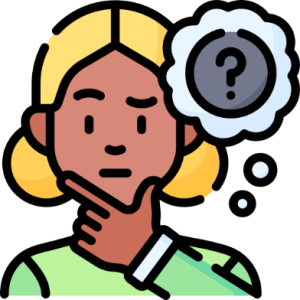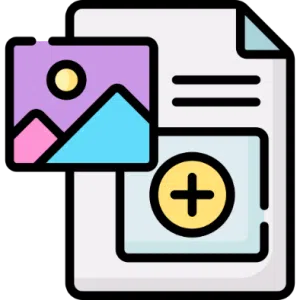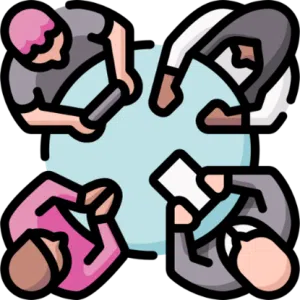People with cognitive disabilities should have the opportunity to participate fully in all aspects of society, including political and public life, cultural life, recreation, and sports. Yet discrimination and barriers outside their control often prevent them from doing so. The same is true for people who are learning English, people who have low literacy, and people with age-related memory problems, just to name a few.
Complex information, unclear communication materials, and jargon-heavy forms are some of the many barriers people face. What if you had a template for making information accessible to everyone so they could use it to make informed decisions and enjoy life more? Easy Read is one solution that can help! In this article, we’ll outline how Easy Read adaptation works for written materials and why it will help you fulfill your organization’s objectives.
A Quick Word on Terminology
In this article, we use “cognitive disabilities” to cover a range of temporary and permanent disabilities and conditions, including intellectual disabilities and learning disabilities.
Many different conditions fall under the umbrella of cognitive disabilities and people with these disabilities have a wide range of needs.
When we talk about barriers and disabilities, the real issue is the lack of accessibility. An environment that isn’t designed to include everyone creates barriers. Easy Read is one way to remove them.
When discussing disability, some people prefer identity-first terminology (“Deaf person”) while others prefer person-first language (“person who is deaf”). The best thing to do is call people what they want to be called. If you’re not sure, respectfully ask what they prefer.
To learn more, explore this guide on equity, diversity, and inclusion terminology or this article on choosing words for talking about disability.
The History of Easy Read
The concept of easy-to-read content can be traced back to Sweden. In the early 1960s, a Swedish parents’ association began fighting for better living conditions for their children with cognitive disabilities who were institutionalized. And these young people also advocated for themselves, organizing their own activities and challenging the prevailing idea that they should be excluded from the rest of society. Politicians took note of public discussions and protests by disability activist organizations and introduced changes to the welfare system that supported the social rights of people with disabilities. In 1968, the Swedish National Board for Education published the first lättläst (Swedish for easy to read and understand) book, an easy-to-read version of Per Anders Fogelström’s popular novel Sommaren med Monika (Summer with Monika).
The Easy Read concept was introduced to Britain in the late 1980s by a group of people with learning disabilities who saw it as a useful way to get the information they needed and wanted in a format that worked for them. While Easy Read is more common in Britain, New Zealand, and Australia, self-advocacy organizations like Self Advocates Becoming Empowered (SABE), Green Mountain Self Advocates (GMSA), and Autistic Self Advocacy Network (ASAN) are also making this practice more widespread in the United States.
While Easy Read was developed by and for people with intellectual and developmental disabilities, it is also helpful for many others, like people learning English and those with dementia.
Organizations That Need Easy Read Content
In the United States, 13.9 percent of adults, over 43 million people, have a cognitive disability, according to the Centers for Disease Control and Prevention. Providing Easy Read materials is one tool to make sure this audience has full access to information. It can help organizations engage more participants, empower people to advocate for themselves and causes they care about, improve health outcomes, build trust, comply with accessibility standards, expand readership, promote civic engagement, and more.
Organizations whose audiences could benefit from Easy Read content include:
☑️ Health and Medical Services
- Hospitals, clinics, assisted living facilities, nursing homes, and other medical facilities
- Public health authorities
- Mental health facilities and support groups
☑️ Social and Community Services
- Food banks and other social support organizations
- Disability rights advocacy organizations
- Churches, mosques, synagogues, and other religious organizations
- Recreation facilities, libraries, day camps
- Public transportation
☑️ Education and Culture
- Schools, universities, continuing education programs
- Museums, historical sites, and other cultural institutions
- Book publishers, digital and print media
☑️ Legal and Public Safety
- Police departments, correctional facilities, courts, law firms
- Victim support organizations, legal aid organizations
☑️ Civic and Financial Participation
- Banks, credit unions
- Voting rights organizations, political organizations
☑️ Government services
Easy Read Format Guidelines
While there is no recognized standard for Easy Read text in the United States, there are guidelines that can help you write in this format. The following non-exhaustive list is drawn from guides written by ASAN and Inclusion Europe.
☑️ Writing style
- Write short sentences, around 10-15 words
- Include one idea per sentence
- Write in active voice
- Provide definitions of key terms
- Use clear, simple words
- Use positive sentences whenever possible
- Use the present tense whenever possible
- Give examples
- Write numbers as digits, not as words
- Write words out rather than using contractions, acronyms or abbreviations
☑️ Design style and formatting
- Use a large font size, no smaller than 14 points
- Choose a sans serif font
- Include lots of space between lines
- Include simple, clear images or graphics to illustrate each main point
- Use bullets for lists
- Divide long content into shorter documents
How to Write Content in Easy Read
Below is an example of Easy Read content so you can see the writing style and formatting in practice.
How to Make an Easy Read Document
 |
Think about what information your audience needs. • Your audience is the people who will read your document. • For example, people who read this Easy Read article on a website. |
 |
Next, write a short outline with the ideas you want to share. • An outline is a list of information you want to write about. • The outline helps you organize your thoughts. |
 |
Now you are ready to make your document with the ideas from your outline. • Write short sentences. • Use simple words. • Add images to explain the information. |
 |
Finally, ask 2 or 3 people from your audience to read the document. • Ask your audience if the document is easy to understand. • Change the parts of the document that are difficult to understand. |
How Easy Read Helps Fulfill Legal Requirements
Providing Easy Read adaptations helps organizations in the United States meet several key legal accessibility requirements, particularly under federal civil rights and disability laws. Here’s how:
☑️ Americans with Disabilities Act (ADA)
- The ADA says that public services and businesses must communicate effectively with people with disabilities, including people with intellectual or cognitive disabilities
- To do this, they need to provide “auxiliary aids and services”, which can include Easy Read materials
- Easy Read helps ensure that people with cognitive disabilities understand the same information as everyone else
☑️ Section 504 of the Rehabilitation Act
- This law applies to any program or service that gets federal funding (like public schools, hospitals, and community services)
- It requires equal access for people with disabilities
- Easy Read supports this by making sure information is clear and accessible for everyone
☑️ Section 508 of the Rehabilitation Act
- Section 508 is mostly about federal websites and digital content
- It says online information must be accessible to people with disabilities
- While it focuses on technology, plain language and alternative formats (like Easy Read) help meet these rules too
☑️ Individuals with Disabilities Education Act (IDEA)
- IDEA supports students who need special education
- Schools must give clear, understandable information to both students and their families
- Easy Read can help parents take part in meetings and help students understand their rights and choices
☑️ Affordable Care Act (ACA), Section 1557
- This law bans discrimination in health care
- It says health providers must make sure people with disabilities can understand their care and make informed decisions
- Easy Read materials can explain things like treatments, health instructions, or consent forms in a way that’s easier to understand
☑️ Plain Writing Act of 2010
- This law tells federal agencies to write clearly when communicating with the public
- Easy Read goes beyond plain language by using simple words, clear structure, and helpful visuals, especially for people who have trouble reading complex text
What’s the difference between Easy Read and plain language?
Plain language means using clear, straightforward words and sentences so that most people can understand the information easily the first time they read it.
For example, instead of saying “utilize,” plain language says “use.” Instead of “individuals,” it says “people.”
It is helpful for everyone, especially people who are busy, tired, or not familiar with the topic.
Easy Read goes even further. It is designed for people who have cognitive, intellectual or developmental disabilities or who have trouble reading or processing information.
Easy Read uses:
- Simple words
- Short sentences
- Lots of white space
- Pictures or symbols to help explain the words
It is specifically designed to make sure people with cognitive disabilities can understand a message.
Want Help Creating Easy Read Content?
Contact us today or visit our Accessibility Solutions page for more details or to get started creating Easy Read versions of your essential communications. Need to evaluate your existing content? We work with our partners to test and refine Easy Read materials to make sure your message is understood as intended.
Photo by Disability Is Beautiful


